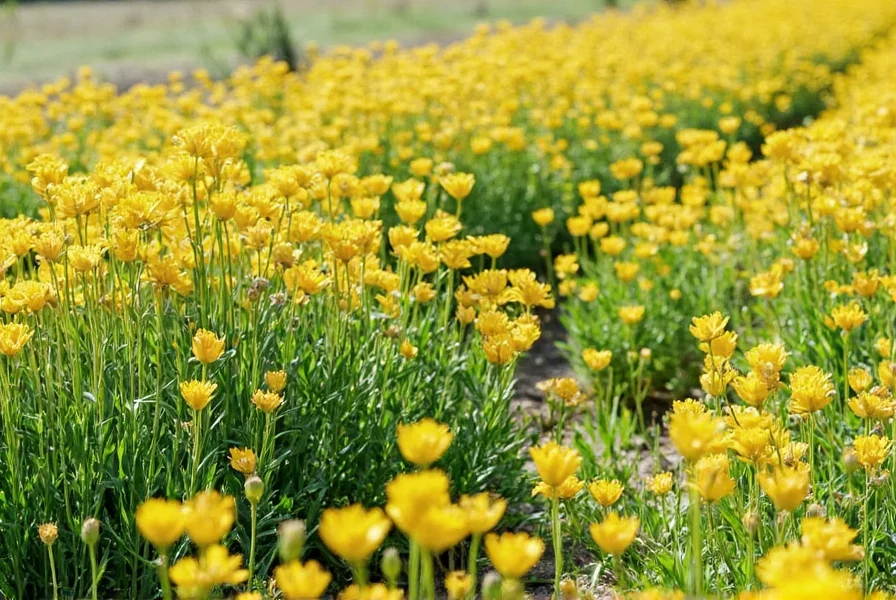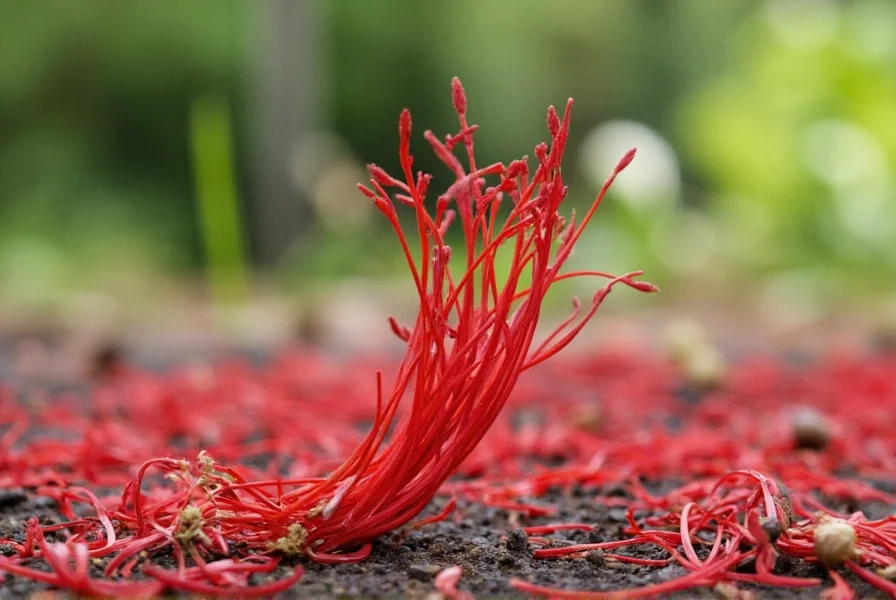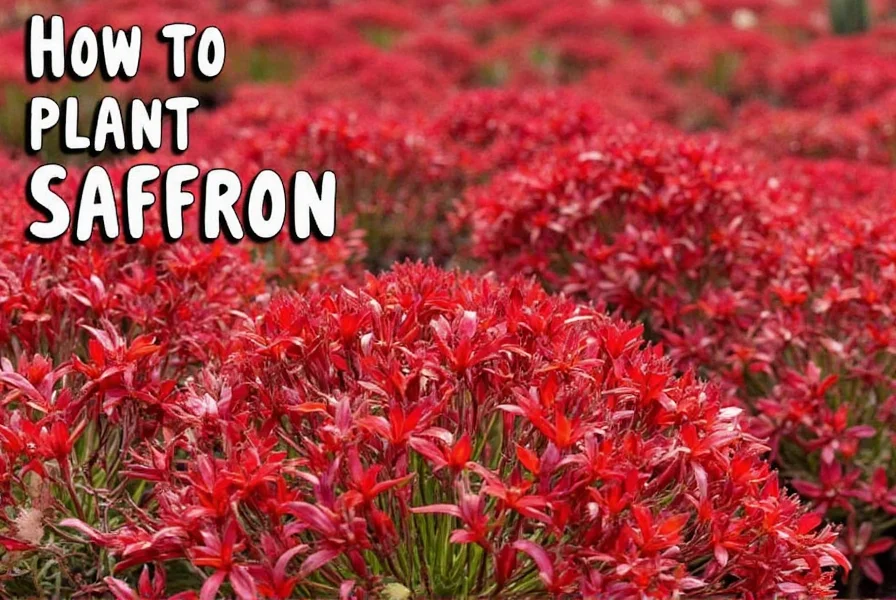Plant saffron crocus (Crocus sativus) bulbs in late summer to early fall (August-September) for harvest the following autumn. Select large, firm corms and plant them 4-6 inches deep in well-draining soil with 4-6 inches between bulbs. Choose a sunny location with at least 6 hours of direct sunlight daily. Saffron thrives in Mediterranean-like climates with hot, dry summers and cool, moist springs. Proper spacing, drainage, and timing are critical for successful saffron cultivation and maximum yield.
For gardeners seeking to grow one of the world's most valuable spices, understanding how to plant saffron properly is essential. Saffron, derived from the delicate stigmas of Crocus sativus flowers, requires specific planting conditions to thrive. This comprehensive guide provides evidence-based techniques for successful saffron cultivation, whether you're planting in your backyard garden or establishing a small-scale production area.
Understanding Saffron Crocus Requirements
Saffron crocus differs from common garden crocuses. This sterile triploid plant doesn't produce seeds and must be propagated through corm division. The plant has specific environmental needs that directly impact yield and quality:
- Climate preference: Mediterranean-like conditions with hot, dry summers and cool, moist springs
- Temperature tolerance: Can withstand winter temperatures down to -15°C (5°F) when properly mulched
- Water needs: Requires dry periods during summer dormancy and moderate moisture during active growth
- Soil pH: Prefers slightly alkaline to neutral soil (pH 6.0-8.0)
Successful saffron cultivation depends on matching these requirements in your specific growing environment. Regions with similar climate patterns to Iran, Spain, and Greece typically achieve the best results, though careful microclimate management can enable saffron production in many temperate zones.

Optimal Timing for Planting Saffron
The best time to plant saffron bulbs varies by climate zone but generally falls in late summer to early fall. This timing allows corms to establish root systems before winter dormancy while avoiding summer heat that can cause rot.
| Climate Zone | Recommended Planting Window | Soil Temperature |
|---|---|---|
| Cold climates (USDA 3-5) | August 15 - September 15 | 55-65°F (13-18°C) |
| Moderate climates (USDA 6-8) | September 1 - October 1 | 60-70°F (15-21°C) |
| Warm climates (USDA 9-10) | October 1 - October 15 | 65-75°F (18-24°C) |
Planting too early in hot weather risks corm rot, while planting too late prevents adequate root development before winter. In regions with mild winters, saffron may produce flowers within 6-8 weeks of planting, typically in October or November.
Soil Preparation for Maximum Saffron Yield
Proper soil preparation represents one of the most critical factors in successful saffron cultivation. Unlike many spring-blooming bulbs, saffron crocus requires excellent drainage to prevent corm rot during summer dormancy.
Begin soil preparation 2-3 weeks before planting:
- Test soil pH and amend as necessary to achieve 6.0-8.0 range
- Remove all weeds and debris from the planting area
- Incorporate 3-4 inches of organic matter (compost or well-rotted manure)
- Add coarse sand or perlite to improve drainage in heavy soils
- Create raised beds 6-8 inches high if drainage is questionable
For container growing, use a mix of 60% potting soil, 30% perlite, and 10% compost. Ensure containers have adequate drainage holes and are at least 8 inches deep. Container-grown saffron requires more frequent watering but offers better control over soil conditions.
Step-by-Step Saffron Planting Instructions
Follow these detailed steps for proper saffron crocus planting:
- Select quality corms: Choose firm, plump corms 1.5-2 inches in diameter without mold or soft spots. Larger corms typically produce more flowers.
- Prepare planting area: Loosen soil to 12-inch depth and incorporate amendments as needed.
- Determine planting depth: Plant corms at a depth of 3-4 times their height (typically 4-6 inches).
- Space properly: Position corms 4-6 inches apart in all directions for optimal growth.
- Orientation matters: Place corms with the pointed end facing upward.
- Cover and water: Gently cover with soil and water thoroughly but avoid saturation.
- Mulch appropriately: Apply 1-2 inches of straw or pine needles after planting in colder climates.
When planting saffron bulbs in rows, maintain 12-18 inches between rows to allow for weeding and harvesting access. For small gardens, consider planting in clusters of 10-15 corms for better visual impact and easier harvesting.

Post-Planting Care for Healthy Saffron Growth
Proper care after planting significantly impacts saffron yield and longevity. Many first-time growers make critical mistakes during this phase that reduce harvest potential.
Watering requirements: After initial planting, water sparingly until growth appears. Once shoots emerge, maintain consistent moisture without saturation. Reduce watering as flowers develop, and stop completely when foliage dies back in late spring.
Fertilization strategy: Apply balanced organic fertilizer (5-10-10) at planting time. Avoid high-nitrogen fertilizers that promote leaf growth at the expense of flowers. In subsequent years, fertilize in early spring as growth begins.
Pest and disease management: Saffron crocus generally resists most pests but can suffer from:
- Corm rot in poorly drained soils
- Vole or rodent damage in some regions
- Botrytis (gray mold) during wet flowering periods
Prevent problems through proper site selection, crop rotation, and avoiding overhead watering during flowering.
Common Saffron Planting Mistakes to Avoid
Even experienced gardeners make errors when planting saffron for the first time. These common mistakes significantly reduce yield:
- Planting too shallow: Results in poor root development and winter damage
- Overwatering during dormancy: Causes corm rot during summer months
- Using poor-quality corms: Small or damaged corms produce fewer flowers
- Ignoring soil drainage: Heavy clay soils require significant amendment
- Planting at wrong time: Early planting in hot weather causes rot
For optimal results when learning how to grow saffron at home, start with a small test plot to evaluate your soil and climate conditions before expanding your planting area.
Expected Timeline from Planting to Harvest
Understanding the saffron growth cycle helps manage expectations for first-time growers. After planting saffron bulbs:
- Weeks 1-4: Root development occurs underground with no visible growth
- Weeks 5-6: First shoots appear above soil surface
- Weeks 7-8: Flower buds form and begin to open
- Weeks 8-10: Peak flowering period (typically October-November)
- Months 3-4: Foliage growth continues through winter
- Months 5-6: Foliage dies back as summer dormancy begins
First-year yields are typically modest as the corms establish themselves. Maximum production occurs in years 2-4, after which corms should be divided and replanted to maintain productivity. A well-maintained saffron patch can remain productive for 5-7 years before requiring division.











 浙公网安备
33010002000092号
浙公网安备
33010002000092号 浙B2-20120091-4
浙B2-20120091-4